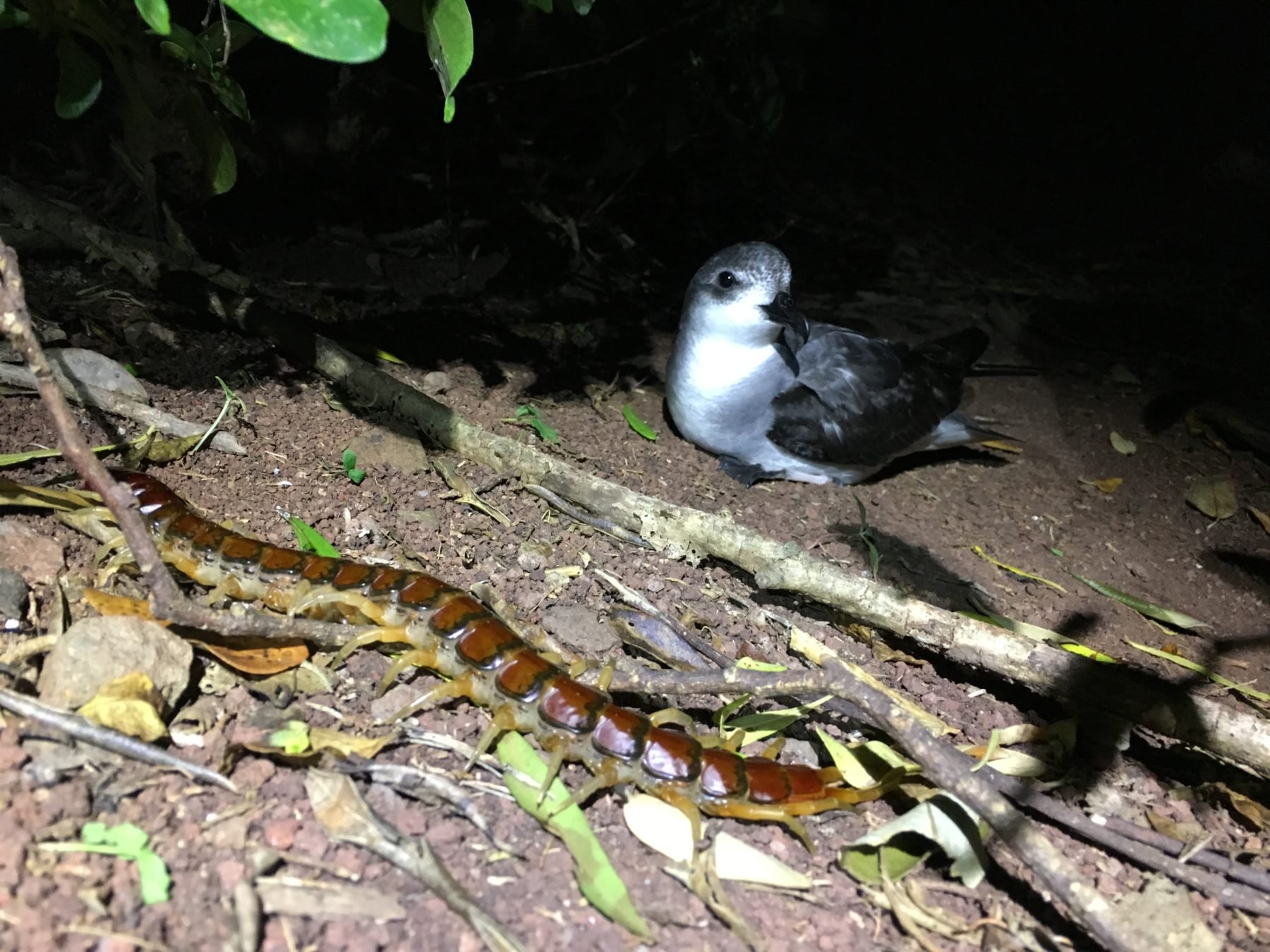Yep, bird-eating centipedes exist

When ecologist Luke Halpin first arrived at Phillip Island in 2018 eager to study its black-winged petrels, he got more than he bargained for. As it turns out the island, 6km south of Norfolk Island, was home to a bird-eating centipede, Cormocephalus coynei.
“At the time, I was a little bit taken aback, but not surprised,” Luke says. “More than anything I was fascinated to witness this natural behaviour. I felt a mix of fascination and horror at my study subjects being eaten. I was slightly concerned that I might get bitten myself. But after hundreds of nights with my arms down countless seabird burrows, I have never been bitten.”
The Phillip Island centipede can grow to almost a foot in length and is estimated to consume 3700 seabird chicks each year. Its body is covered in shield-like armoured plates and its venom is encased in two pincer-like appendages known as forcipules.
With these forcipules, the centipede envenomates its unsuspecting petrel chick prey and slowly consumes it whole.

Luke’s research, published this week in The American Naturalist, required him to take tissue samples of the centipede, which then told scientists exactly what and how much the centipede was eating. This revealed that seabirds were a staple of the centipede’s diet.
Because the centipede has no known predators, it is the top dog in this ecosystem. The research further suggests that the centipede plays an extremely important role in maintaining peace on the island.
“The centipede preying on seabirds is entirely natural,” Luke says. “In fact, it’s important. By preying on vertebrates such as seabirds and fish, the centipede traps nutrients brought from the ocean by seabirds and distributes them around the island.
“In some sense, they’ve taken the place or ecological niche of predatory mammals, which are absent from the island.”

The natural order of things on the island was only recently restored by the removal of feral pests, such as pigs, goats and rabbits, which allowed for seabird populations to explode, and, in turn, centipede populations.
According to Luke, the centipede’s predatory habits may be important for the continued recovery of Phillip Island.
“Because of the centipede’s role in driving nutrient transfer, areas of the island with higher densities of centipedes might recover faster than areas that are degraded.
“This could be important for recovery of a variety of critically endangered species on Phillip Island, many of which are endemic and found nowhere else on Earth.”
Correction: this article previously stated Phillip Island was south of Melbourne. The study site is on Phillip Island that’s located 6km south of Norfolk Island.





